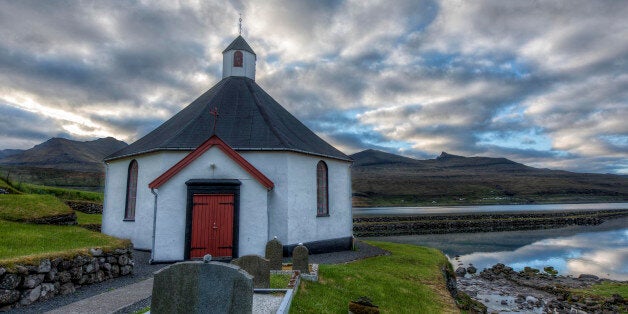
I'm crouching behind a sizeable boulder in the tussocky grass - camera paparazzi-style in hand, fog swirling relentlessly around me. Sheep appear like ghosts from the spectral folds of mist draping the moorland. I inch slowly closer to photograph them, but try as I might to hide, the slightest glimpse of my red waterproof jacket gives me away, and the flock disappears again with muffled bleats of disgruntlement.
This is my first foray as a sheep stalker, but then this is also my first visit to Føroyar, the Faroese word for the archipelago that translates as 'the sheep islands', which is a fitting name when you consider that its 49,000 residents are outnumbered by sheep at least 2:1.
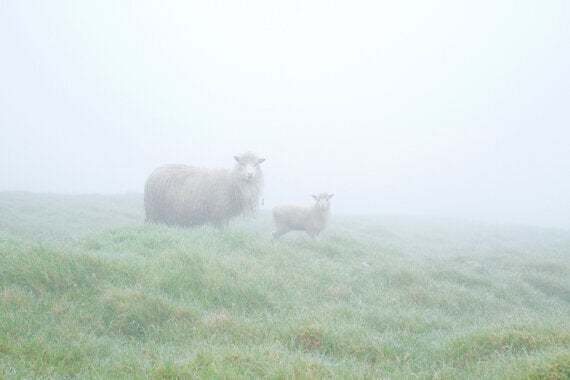
Midway between Scotland and Iceland, the Faroe Islands are the plaything of vicious North Atlantic swells and the folly of Norse weather gods, who are surely having a good laugh up there - radiant and sunny, dreich and drizzle-spattered, foggy and stormy, the weather here can whisk you through all four seasons in the space of a day.
True, there are easier places to get a tan, but the Faroes still have an irresistible allure for anyone who appreciates wild places. When the mist lifts, the fog clears and the rain dries up, their beauty is nothing short of mind-blowing. The landscapes look as though they have been drawn by a particularly talented child - jagged cliffs that topple down to a foaming, thrashing ocean, rolling, vibrantly green hillsides denuded of trees, scrunched up layer-cake mountains interspersed by the blue splash of fjords and hobbit-like houses with turf roofs.
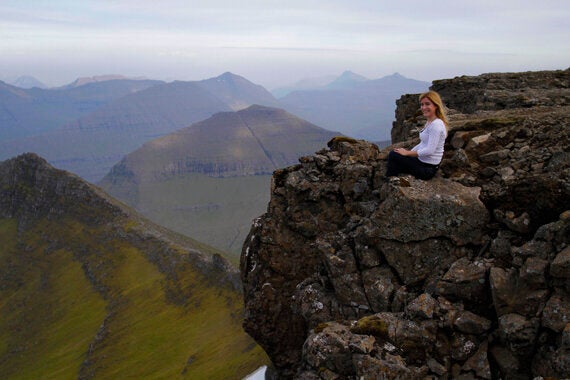
Not only the scenery has a storybook quality, however. As the local lore goes, the islands were once the envy of Icelandic giants, who sent across a witch, Kellingin, and a giant, Risin, to pinch them. The terrible two got into bother as they struggled to heave the islands onto the giant's back, turning to stone as the sun rose. The sea stacks named after the giant and witch can be seen today off the coast of Eysturoy; the pair of petrified thieves suffering the eternal wrath of Atlantic swells.
Eysturoy is the Faroes' second-biggest island and it is my first stop. The weather is behaving itself and together with a group of fellow hikers I swiftly ascend the rough, cairn-marked trail to the summit of 880m Slættaratindur, the country's highest peak. From this vantage point, I can gaze across a spectacularly buckled and contorted spine of mountains, riven with fjords that glimmer silver when the clouds part and the sun filters through. On cloudless days, it is, apparently, possible to glimpse Iceland, 350 miles distant.
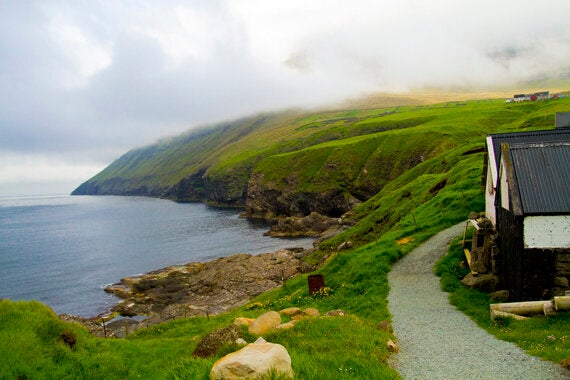
Slættaratindur means 'flat summit'. Flat enough, according to the Faroese, for the centuries-old local tradition of chain dancing - Europe's only surviving medieval story dance. Later that day, after a hearty meal and a couple of Black Sheep beers, Eirik Suni Danielsen, the charismatic owner of Gjáargaður guesthouse in Gjógv, shows us the chain-dancing ropes.
Chain dancing warms us up nicely for a brisk stroll down to the deep cleft that forms Gjógv's striking natural harbour. We rock hop along the shore and clamber up to a sheer cliff face. Birds flutter like confetti above. There are puffins on the opposite side of the cleft, I am told, which I can distinguish only from this distance by their comically desperate flapping. I glance at my watch and it is almost midnight, yet it is still as light as day in the land of the midnight sun.

The raucous squawking of what my guidebook informs me is a guillemot is my wake-up call.
There is little time to waste and I am soon in a minibus on my way to Klaksvík, where I hop aboard a helicopter for the quick buzz over to the remote north-eastern island of Svínoy, population 52.
Farmer and local guide Jógvan Edmund á Geilini meets our group and shows us his turf. We walk through mossy pastures up to cliffs speckled with wildflowers and angelica, the hardy herb so prized by the Vikings. The silence is interrupted only by the hiss of the ocean and the birds that wheel overhead - kittiwakes, oystercatchers, razorbills and great skuas. We have to watch our step so as not to trample on the fragile eggs of eider ducks and the tiny, play-dead young of black-backed gulls. Jógvan shows us the slatted outhouses, where pilot whale and lamb meat are hung to dry in the wind, and the village church that contains the headstone of the great Viking chief Svínoyar-Bjarni, mentioned in the Faroese Saga.
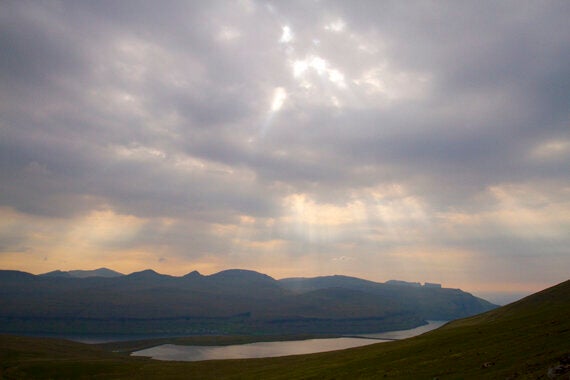
The Faroese say that if you don't like the weather, you should wait five minutes, but the following day the mist lingers. This thwarts our attempt to hike to the precipitously perched lighthouse at Kallur on the island of Kalsoy, nicknamed 'the flute' because of the tunnel that burrows through it to accommodate the only road. We might not be granted the full-on drama of the five island view from its heights, but walking in a place so remote that it has an edge of the world quality is special nonetheless. The only sounds are crashing waves, the cry of birds, the fall of foot on rock.
By comparison to Kalsoy, Tórshavn, the capital of the Faroes, is positively metropolitan. A jumble of brightly painted, turf-roofed houses in the quaint harbour district of Tinganes shelters the Faroese Home Rule government, and this was indeed where the Viking ting (parliament) first began to meet in circa AD900.

From the hilltop Hotel Føroyar, you can take in the entire sweep of the town and its exposed harbour, which is subjected to some of the North Atlantic's most brutal swells. The picture windows in Koks restaurant play up these views, as dish after delicately prepared, ingredient-focused dish arrives. Foraged lovage parfait with caramelised seaweed, meltingly tender roast lamb with sorrel and angelica, dried codfish chips - this is food that whispers of briny ocean and barren moorland. Even in one of the Faroes' slickest restaurants, the elements are felt keenly and nature is never far away.
Getting There & Away
Atlantic Airways fly twice-weekly (every Monday and Thursday) between London Stansted and Vágar from June to late August. Return fares start at £230. They also operate the archipelago's efficient and remarkably inexpensive helicopter service.